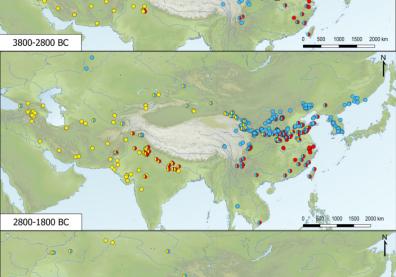Linguistic and archaeological evidence for Sino-Tibetan migrations

The spread of language families is hypothesized to have occurred via agricultural and demographic transitions that drove populations outwards from agricultural centres of origin, “demic diffusion”. However, the geographical origins of language families are often tied to where greatest linguistic diversity is seen. For the Sino-Tibetan language family this creates a conflict, as maximal linguistic diversity lies in North-Eastern India and Nepal, whereas centres of Neolithic crop domestication in the Yellow and Yangtze River Basins have low linguistic diversity today. Therefore either Sino-Tibetan languages originated in North-Eastern India, and spread by means other than demic diffusion; or multiple diffusions of agriculturalists occurred from a once linguistically diverse homeland, in which linguistic diversity was maintained or increased as peoples spread westwards, but was lost in the homeland. This presentation explores these two hypotheses using evidence from historical linguistics and archaeology.
Organizer and contact: Guillaume Jacques (CRLAO, CNRS-EPHE-Inalco) : rgyalrongskad@gmail.com